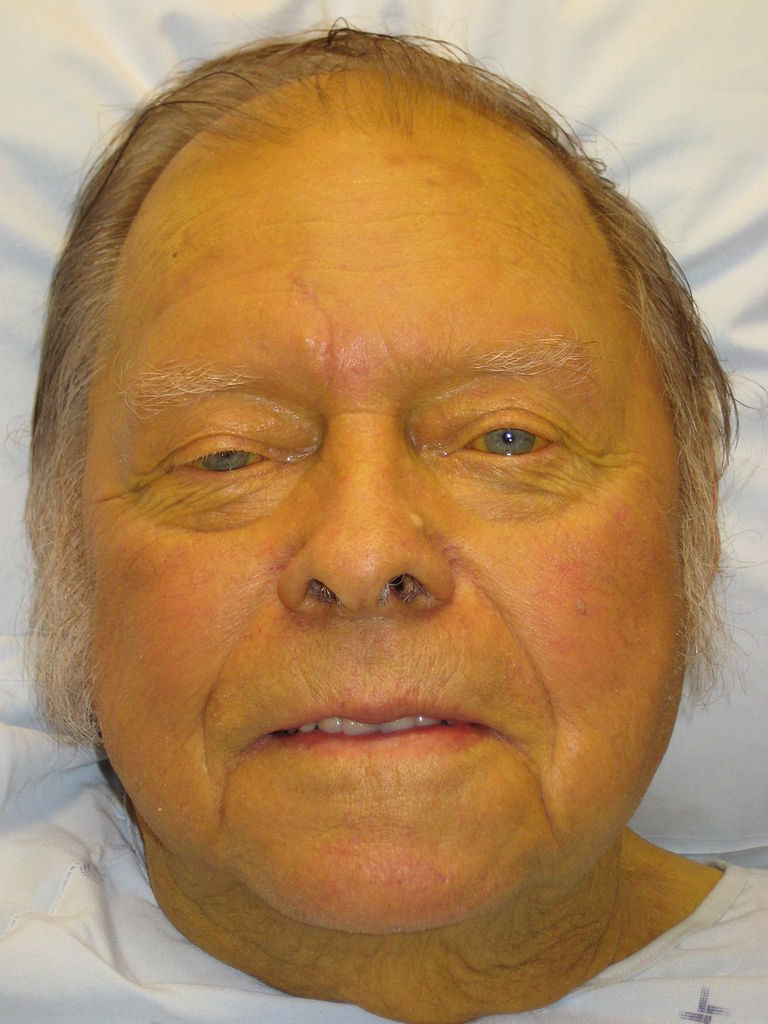Playlist
Show Playlist
Hide Playlist
Autoimmune Hepatitis
-
Slides GIP Autoimmune Hepatitis.pdf
-
Reference List Pathology.pdf
-
Download Lecture Overview
00:01 Welcome! In this talk, we're going to be discussing a variation on hepatitis inflammation of the liver. 00:07 In this case, due to the immune system, turning against it or autoimmune hepatitis. 00:14 So simply it's an autoimmune liver inflammation. 00:17 The epidemiology of this suggests that it's not a public health menace, maybe one person per 100,000 people each year. 00:25 It is for reasons that are not entirely clear, more commonly seen in women than in men. 00:30 And that's pretty true of most autoimmune diseases. 00:34 There is a bimodal distribution, so late teens, and then in the older years 45 to 70. 00:42 Frequently there is concurrent immune disorders or in family members, autoimmune diseases can be quite prevalent. 00:52 So either up 40% of cases, there will be something else suggested or suggesting a lack of immune regulation. 01:01 And so Hashimoto thyroiditis, Graves disease, rheumatoid arthritis may all be present. 01:07 The pathophysiology is reasonably straightforward, except we don't really understand why we lose tolerance for self antigens. 01:14 But once we lose tolerance for self antigens, we generate, one, cytotoxic T-lymphocytes, but also antibodies that can bind to the surface of various antigens on the hepatocytes. 01:26 Those then will recruit FC receptor bearing cells that can kill the hepatocyte through the activity of antibody dependent cell mediated cytotoxicity. 01:37 To hear more about ADCC, you can go back to the immunology talk in basic pathology. 01:44 Once we have that activity going on, the antibodies binding, we will release porphyrins and granzymes and we will cause the apoptotic cell death of the hepatocyte. 01:54 I will also say that in some cases, it's not antibody driven. 01:57 It's cytotoxic T-lymphocyte driven. 02:00 The same idea is obtaining. 02:03 How does your patient with autoimmune hepatitis present. 02:08 It's going to look like hepatitis, and we're going to have to rule out a variety of other things before we can make a diagnosis of autoimmune. 02:15 So it's like any other inflammation of the liver, there will be generalized malaise, fever, lethargy, nausea, right upper quadrant pain as we have inflammation and expansion of the liver and the stretching of glistens capsule, there may be weight loss due to anorexia, there maybe an erythematous rash is part of the secondary autoimmune phenomena. 02:36 Patients may present with jaundice, because they are not able to excrete bilirubin appropriately. 02:42 The diagnosis is made on exclusion of other causes of hepatitis. 02:48 So infections and drugs, metabolic disease such as non alcoholic fatty liver disease, or other genetic causes. 02:55 We will see elevated trans emanations and that's to be expected anytime you injure a hepatocyte, so that's definitely not specific. 03:03 There may be elevated gamma globulins, so hypergammaglobulinemia. 03:08 But that again is not entirely specific and could be also present with unrelated infections or other disorders. 03:17 Somewhat specific, our auto antibodies directed against smooth muscle antigens, or anti nuclear antigens, or liver and kidney microsomal antibodies, so sub cellular organelles, and we can specifically look for the presence of these antibodies. 03:34 And if positive, that really puts us down into the range of autoimmune hepatitis. 03:41 And then of course, we would want to do a biopsy to make sure there's not some other cause for the inflammation within the liver. 03:47 How are we going to manage our patients? Well, it's what we would do pretty much for any autoimmune disease. 03:52 Once we have identified that as a cause, we can give immunosuppression, so we can do corticosteroids, and fortunately, in the vast majority of patients about 80%, they will get a good therapeutic response and we're good to go. 04:06 You may also use other agents that don't require steroids for someone who may not be a good candidate, someone who has osteoporosis for example. 04:13 So use an Azathioprine. 04:16 In extremis, when you have severe disease that has destroyed the liver and you have no other option, you can offer the possibility of liver transplantation. 04:25 The problem is whatever autoimmune auto antibodies and or cytotoxic T-lymphocytes that have been elicited previously, they're still there. 04:34 So liver transplant, even in the setting of immunosuppression for the liver transplant may still have the disease recurring that autoimmune hepatitis. 04:44 Overall, because of the really good response to corticosteroids, the 10 year survival is excellent, about 90%. 04:50 If there is no treatment, however, this is a rapidly fatal disease with 40% mortality within six months. 04:58 With that, you know everything that I know about autoimmune hepatitis.
About the Lecture
The lecture Autoimmune Hepatitis by Richard Mitchell, MD, PhD is from the course Disorders of the Hepatobiliary System.
Included Quiz Questions
What statement about the diagnosis of autoimmune hepatitis is true?
- It is a diagnosis of exclusion.
- Antibodies in the blood are sufficient for diagnosis.
- ALT is equal to AST.
- A trial of glucocorticoids is necessary for diagnosis.
- Bilirubin is decreased.
What is the gold standard diagnostic test for autoimmune hepatitis?
- Liver biopsy
- ALT
- Anti-smooth muscle antibodies
- Anti-nuclear antibodies
- Liver-kidney microsomal antibodies
What is the response rate of autoimmune hepatitis to corticosteroids?
- 80%
- 70%
- 60%
- 50%
- 90%
Customer reviews
4,0 of 5 stars
| 5 Stars |
|
0 |
| 4 Stars |
|
1 |
| 3 Stars |
|
0 |
| 2 Stars |
|
0 |
| 1 Star |
|
0 |
1 customer review without text
1 user review without text




